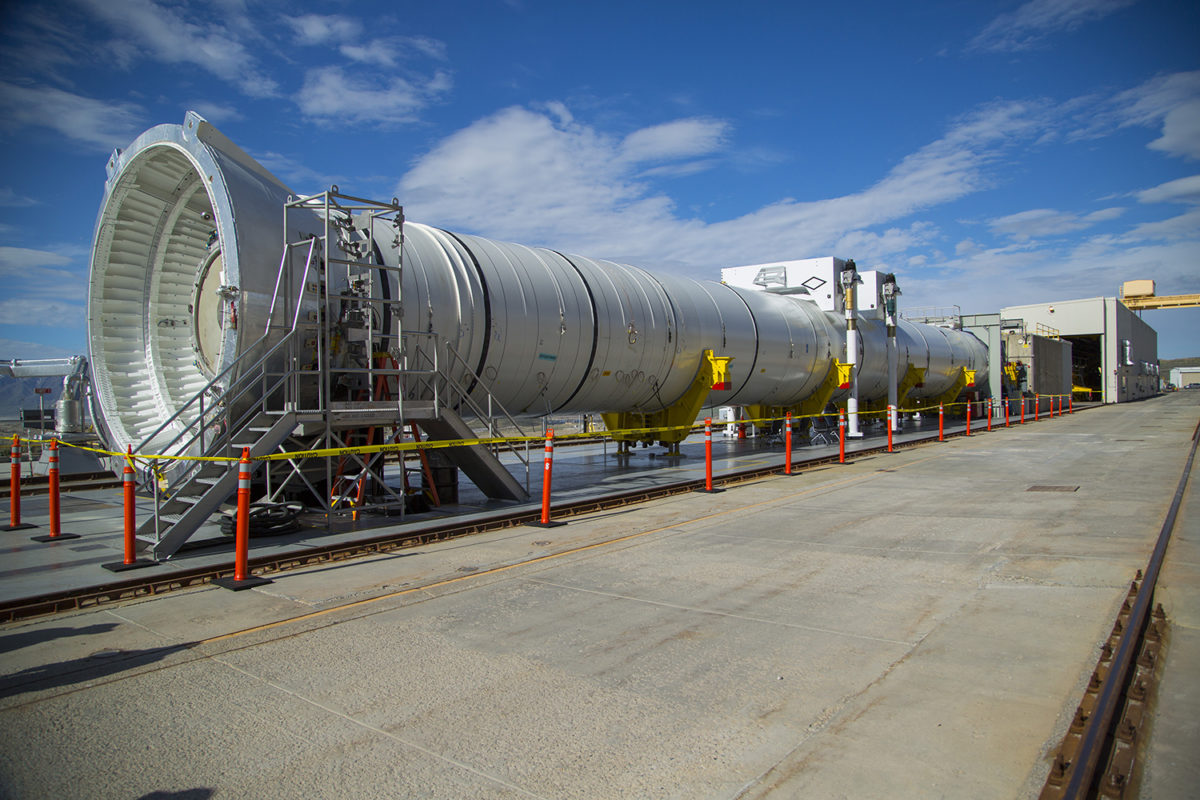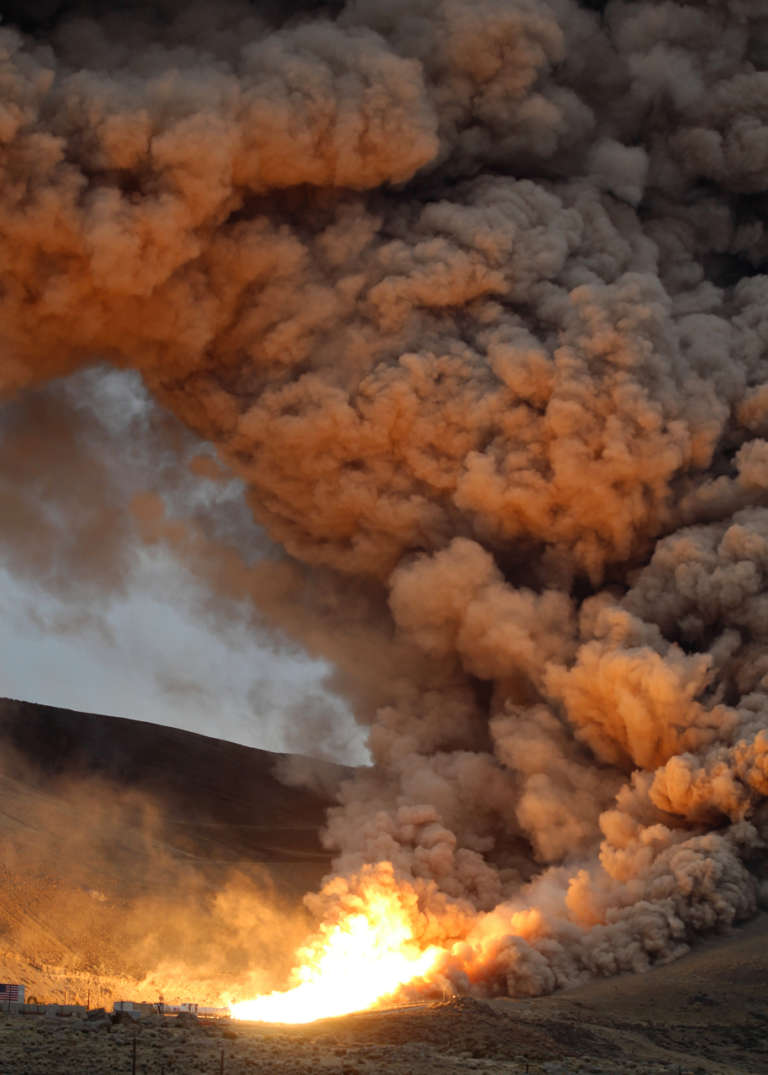Jason Davis • Jun 27, 2016
Watch a test of the world's largest solid rocket booster tomorrow on NASA TV
Tomorrow morning, NASA and Orbital ATK are test-firing the world's largest solid rocket booster in northern Utah.
It will be the second and final qualification test of the 54-meter, five-segment booster design that will be used on the Space Launch System, NASA's new heavy lift rocket scheduled to debut in late 2018. Four-segment versions of the booster were used to help power space shuttles into orbit for three decades.
The test will take place near Orbital ATK's Promontory, Utah facilities. The Planetary Society (me!) will be on hand to tour Orbital ATK's facilities, get an up-close look at the booster and watch the two-minute test burn from a viewing site about two kilometers away.
QM-2 booster test: Watch live
The test firing of Qualification Motor 2 (QM-2) is scheduled for Tuesday, June 28 at 8:05 a.m. local Utah time (10:05 a.m. EDT, 14:05 UTC). NASA TV coverage starts at 9:30 a.m.

Qualification tests help certify that the Space Launch System's upgraded boosters are ready for flight. The rocket is laid on its side and held in place against a massive concrete block near the side of a sagebrush-dotted hillside. A movable, climate-controlled test stand housing covers the booster, and will be rolled away before ignition.
NASA says there are 82 design objectives for Tuesday's test, and more than 530 instrumentation channels will collect data. The booster's flight computer will also command the rear nozzle to swivel around during the burn, simulating the way the booster helps steer SLS during ascent.
A single SLS solid rocket booster burns through 6 tons of its solid-grain, polybutadiene acrylonitrile propellant—more commonly referred to as PBAN—every second. The booster's five propellant segments are doughnut-shaped and cast in different patterns that vary the amount of fuel burning at any given time. Since a solid rocket booster cannot throttle like a conventional liquid engine, changes in the burn rate serve as a throttle control mechanism.
The ignition sequence begins when a pyrotechnic device called an initiator starts a chain reaction down the center column of the booster, igniting the propellant. Once lit, a solid rocket booster burns until its fuel supply is depleted. Tuesday's test will last the same two-minute duration of a standard SLS flight.
Cool booster, hot fire
Like the space shuttle, the Space Launch System must launch in a variety of weather conditions on the Florida coast. Based on lessons learned from the shuttle program, SLS boosters are rated to operate at internal temperatures between 40 and 90 degrees Fahrenheit.
Because it takes a long time for outdoor temperature changes to affect the propellant itself, that 40-to-90-degree spread doesn't necessarily match the allowable temperature range on launch day.
During qualification testing, engineers test-fire the booster at both ends of the temperature range. The lower the propellant temperature, the slower the burn rate.
Last year, in March 2015, NASA heated the booster to 90 degrees. For Tuesday's test, they're cooling it to 40 degrees. Right now, three giant air conditioning units—the same kind used to cool ice rinks—are keeping the booster's test stand housing temperature at a frigid 25 degrees. NASA says it took more than a month to get the booster down to 40 degrees, and tomororw, when the stand is rolled back from the booster, the propellant temperature will slowly begin to rise. That's why the test is scheduled for early morning—midday highs tomorrow may be close to 100 degrees.
Once the booster ignites, the propellant won't stay cold for long. Exhaust temperatures hit about 6,000 degrees. That's almost as hot as the top layer of the sun's photosphere (6,700 degrees), and easily hot enough to melt most metals. The booster's casing used to be lined with asbestos for heat protection; after the retirement of the shuttle, the insulation was re-engineered to be asbestos-free.

We'll be posting pictures and videos from Promontory here at planetary.org, and you can also follow me on Twitter for more updates.
Want more booster backgrounders? You can read last year's articles on the QM-1 test. Here's a preview article featuring an interview with an SLS engineer (I hope to make it over to Promontory Point to see the real golden spike while I'm here), along with some pretty pictures by Bill Dunford.
Let’s Go Beyond The Horizon
Every success in space exploration is the result of the community of space enthusiasts, like you, who believe it is important. You can help usher in the next great era of space exploration with your gift today.
Donate Today

 Explore Worlds
Explore Worlds Find Life
Find Life Defend Earth
Defend Earth



